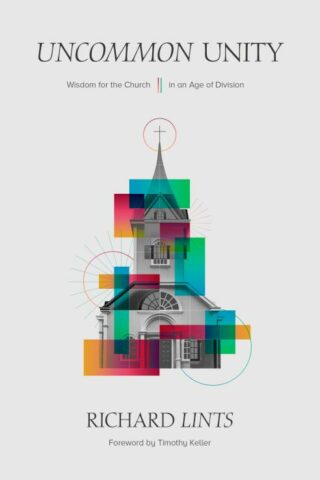Richard Lints
Showing all 2 results
-
Uncommon Unity : Wisdom For The Church In An Age Of Division
$29.99Add to cartOur world is facing increasing hostilities. Political and cultural differences rage, even among people who otherwise show goodwill. And the church is no stranger to extreme polarization, theological backbiting, and political squabbling. Jesus’s prayer in John 17–that the church be one as he and the Father are one–seems increasingly unattainable.
But what if Scripture actually provides the key for thinking about unity in diversity?
In Uncommon Unity: Wisdom for the Church in an Age of Division, Richard Lints explores the nature of diversity and how Christians can think more clearly about unity in an increasingly polarized age. Drawing on theological, historical, and sociological resources, Lints exposes problems with the inclusion narrative of democracy and shows a better way forward for fostering unity in the midst of extreme diversity. If we are to think rightly about diversity, wisdom is required for the church in our late modern world. Through wisdom, Christians can display real unity in diversity and bear witness of the God who made them for himself as diverse members of his one body.
Readers of Uncommon Unity will be heartened that Scripture and Christian tradition provide an antidote to division.
-
Identity And Idolatry
$25.00Add to cartSeries Preface
Author’s Preface
Abbreviations1. Living Inside The Text: Canon And Creation
2. A Strange Bridge: Connecting The Image And The Idol
Getting Started On The Wrong Foot: Creation And Image
Human Identity And Human Nature3. The Liturgy Of Creation In The Cosmic Temple
The First Stable As Prologue
The Liturgy Of Creation
The House That God Built4. The Image Of God On The Temple Walls
Introduction
Image And Original
Signs Of Reflection
A Reflected Relationship
The First Table Background: Kings And Representatives
After The First Table: Sonship And Sacredness
Prelude To Idolatry5. Turning The Imago Dei Upside Down: Idolatry And The Prophetic Stance
After Creation-whence Is The Image?
Divine Fidelity And The Image
The Decalogue And The Diatribe Against Idolatry
The Golden Calf-the ‘great Sin’ Of Idolatry
Covenantal Identity And Idolatry Across The Old Testament
Idolatry And Adultery6. Inverting The Inversion: Idols And The Perfect Image
Turning The Story Upside Down
Setting The Context
Idolatry And The Gentile Mission
Theologies Of Idols: Romans 1 And 1 Corinthians 10
Narratives Of Idolatry: Acts 7 And 17
The Perfect Image
Being In The Image Of The Image7. The Rise Of Suspicion: The Religious Criticism Of Religion
Idolatry As Ideological Criticism: The Stage Is Set
Idolatry As Psychological Projection
Idolatry As Alienation And Oppression
Idolatry And The Origin Of Religion
Friedrich Nietzsche (1844-1900)8. Significance And Security In A New Key
The Crisis Of Identity And The Idolatries Of Consumption
Christian Identity And Plastic Narratives
An Eternal Story Told Across TimeBibliography
Index Of Authors
Index Of Scripture ReferencesAdditional Info
“So God created man in his own image, in the image of God he created him; male and female he created them.” (Genesis 1:27)Genesis 1:26-27 has served as the locus of most theological anthropologies in the central Christian tradition. However, Richard Lints observes that too rarely have these verses been understood as conceptually interwoven with the whole of the prologue materials of Genesis 1. The construction of the cosmic temple strongly hints that the “image of God” language serves liturgical functions.
Lints argues that “idol” language in the Bible is a conceptual inversion of the “image” language of Genesis 1. These constructs illuminate each other, and clarify the canon’s central anthropological concerns. The question of human identity is distinct, though not separate, from the question of human nature; the latter has far too frequently been read into the biblical use of ‘image’.
Lints shows how the “narrative” of human identity runs from creation (imago Dei) to fall (the golden calf/idol, Exodus 32) to redemption (Christ as perfect image, Colossians 1:15-20). The biblical-theological use of image/idol is a thread through the canon that highlights the movements of redemptive history.
In the concluding chapters of this New Studies in Biblical Theology volume, Lints interprets the use of idolatry as it emerges in the secular prophets of the nineteenth century, and examines the recent renaissance of interest in idolatry with its conceptual power to explain the “culture of desire.”
Addressing key issues in biblical theology, the works comprising New Studies in Biblical Theology are creative attempts to help Christians better understand their Bibles. The NSBT series is edited by D. A. Carson, aiming to simultaneously instruct and to edify, to interact with current scholarship and to point the way ahead.


